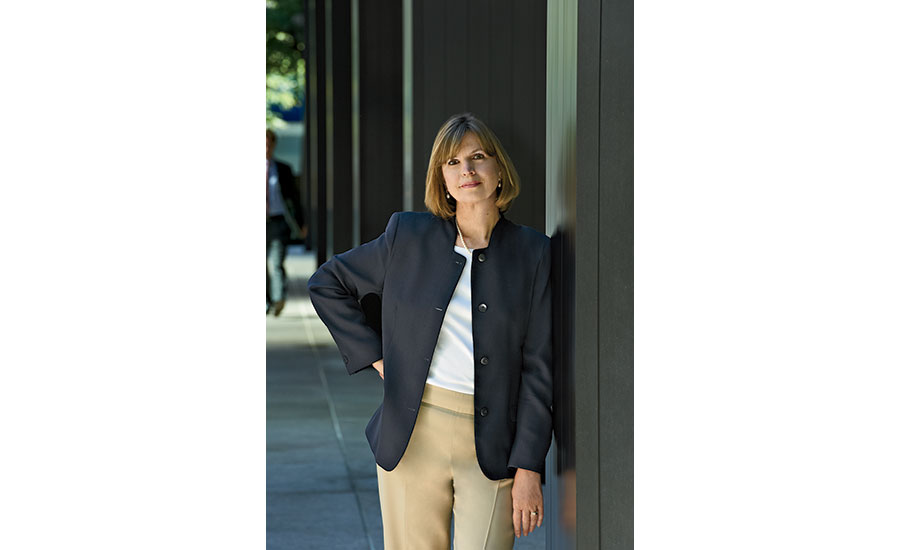I am writing this letter in a setting that is soon to be obsolete—a small private office assigned just to me, sitting at an L-shaped desk, with a few photographs, mementos, and the odd quotation pinned to the wall. I also confess to having quite a few magazines, folders, and books strewn about, which seems normal and cozy to me.
Yet according to Unispace, a workplace design firm in Sydney, the traditional desk could go the way of the typewriter in the next few years, as workers become increasingly transient—even when they are in their employer’s offices. Of course, the open plan has been around at least as far back as Frank Lloyd Wright’s 1906 Larkin Building. But the recent trend away from working in a designated cubicle—to grabbing a seat at a bench or plopping into a lounge chair with a laptop—is accelerating: more full-time employees no longer have assigned desks at their companies, as rising real-estate costs and evolving work styles make the idea of an individualized work space both a luxury and an anachronism.
In an essay called “Musical Chairs”, writer Jerry Adler explores this trend and its impact on design—and on users. The space allotted for each worker has plunged from 200 square feet 15 years ago to 100 today and is on its way down to 60 square feet, according to one source. The good news: as personal work space has shrunk, the amount of shared space—conference rooms, huddle rooms, informal lounges, phone booths, cafés, fitness centers—has quickly expanded.
“Activity-based working” is guiding architects in the design of many of today’s offices. In the U.S. Workplace Survey 2016 published by Gensler, the most innovative workers were most likely to have the choice of where (and when) to work—and to have access to such amenities as cafés and outdoor space at the office. (Gensler, by the way, leads the Top 300 architecture firms in revenue, for the fifth year in a row.)
While the office plans of many enterprises are still based on hierarchies—with C-suite executives or senior law partners cocooned in their own spaces—most of the workplaces featured in this month’s issue reflect the democracy of current trends. The new offices for Pinterest in San Francisco, for example, echo the sharing culture of the digital platform itself, with lots of casual lounge spaces and long tables for eating and meeting. A central stair, linking four floors in what was once a warehouse, departs from the trite stadium-style steps of many other contemporary offices and instead is a luminous sculptural element that also fosters serendipitous encounters. Transparency is a big buzzword in office design today, and the way glass is used for Pinterest’s meeting rooms means “there’s no FOMO (fear of missing out),” says Lisa Iwamoto, a founding partner of IwamotoScott, architects of the project.
The Edge, a new 15-story office building in Amsterdam, designed by the London-based firm PLP Architecture, exemplifies all the hallmarks of the workplace of the future. It is radically energy-efficient (a sustainable office can be a powerful recruiting tool to lure young talent), with state-of-the-art digital technology throughout. Work spaces overlook a vast skylit atrium—flooded with natural light even on gray days—that is packed with informal areas to gather, eat and drink. There are no assigned desks for the staff of the main tenant, Deloitte: the international accounting firm estimates that only 25 percent of its employees are at a desk at any one time. With its highly flexible design, the offices don’t define the work culture. “While the physical building is finished,” points out Ron Bakker of PLP, “socially, it is still developing.”
But despite the longer hours that most people now work—and all the amenities and diversions that tie them to today’s office—everyone should take a vacation. It’s August, and if by chance you’re headed to Montana, do stop at Tippet Rise Art Center, a private sculpture park and music venue in the midst of a ruggedly beautiful ranch. Massive poured-concrete formations called “Structures of Landscape,” designed by the architecture studio Ensamble (2004 RECORD Vanguard winners), were fabricated on-site, in the earth, and then craned into place. In a world where the only constant is change, these amazing creations look as timeless as Stonehenge.




Post a comment to this article
Report Abusive Comment